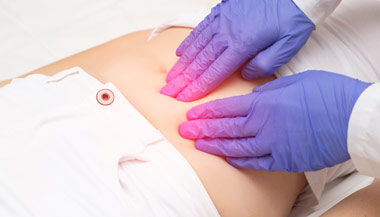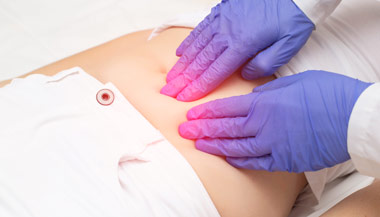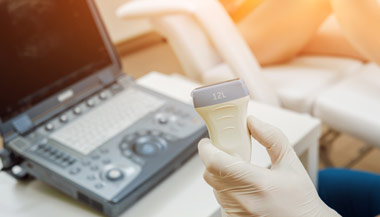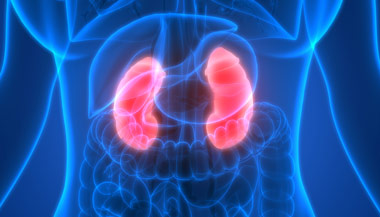Cystography
What is cystography?
Cystography is an imaging test that can help diagnose problems in your bladder. It uses X-rays. They may be X-ray pictures or fluoroscopy, a kind of X-ray "movie."
During cystography, the healthcare provider will insert a thin tube called a urinary catheter and inject contrast dye into your bladder. The contrast dye will let the healthcare provider see your bladder more clearly. He or she will take X-rays of the bladder. Cystography is sometimes combined with other procedures. For example, cystourethrography images the bladder and the urethra. The healthcare provider may also use fluoroscopy to watch how the bladder empties while you urinate (voiding cystourethrography). Cystography may show whether any urine backs up into the kidneys (vesicoureteral reflux). Computerized tomography (CT) cystography is sometimes used following trauma or recent surgery.
X-rays use a small amount of radiation to create images of your bones and internal organs. X-rays are most often used to find bone or joint problems, or to check the heart and lungs. Cystography is one type of X-ray.
Why might I need cystography?
You might need cystography to find out the cause of:
- Blood in your urine (hematuria)
- Urinary tract infections that keep coming back
- Problems emptying your bladder
- Urinary reflux, when urine flows back into 1 or both ureters and, in some cases, to 1 or both kidneys
- Urinary incontinence
Other reasons that you may need cystography:
- Trauma to the bladder. The test will let your healthcare provider see if you have a tear in the wall of your bladder.
- A blockage in or narrowing (strictures) of the ureters or urethra
- Before or after certain spine surgeries. This will let your provider see possible problems with the nerves leading to the bladder from the spine.
Your healthcare provider may have other reasons to recommend cystography.
What are the risks of cystography?
You may want to ask your healthcare provider about the amount of radiation used during the test. Also ask about the risks as they apply to you.
Consider writing down all X-rays you get, including past scans and X-rays for other health reasons. Show this list to your provider. The risks of radiation exposure may be tied to the number of X-rays you have and the X-ray treatments you have over time.
Tell your provider if:
- You are pregnant or think you may be pregnant. Radiation exposure during pregnancy may lead to birth defects.
- You are allergic to or sensitive to medicines, contrast dyes, local anesthesia, iodine, or latex
- You have kidney failure or other kidney problems
You are at risk for a bladder infection because a thin tube (catheter) is put into your bladder during the test. The catheter may also cause bleeding or hematuria.
Certain things can make the results of the test less accurate. These include:
- You have gas or stool in your intestines
- You have barium in your intestines from a recent barium enema
You may not be able to have cystography if you:
- Have a urinary tract infection
- Are pregnant
- Are allergic to contrast dyes
You may have other risks depending on your specific health condition. Be sure to talk with your provider about any concerns you have before the procedure.
How do I get ready for cystography?
- Your healthcare provider will explain the procedure to you. Ask him or her any questions you have about the procedure.
- You may be asked to sign a consent form that gives permission to do the procedure. Read the form carefully and ask questions if anything is not clear.
- You may need to stop eating and drinking before the test. Your healthcare provider will give you specific instructions. Generally, this means no food after midnight and only clear liquids the day of the test. You may be told to drink additional clear liquids the day before and day of the procedure.
- Tell your provider if you are pregnant or think you may be pregnant.
- Tell your provider if you have had a reaction to any contrast dye, or if you are allergic to iodine.
- Tell your provider if you are sensitive to or are allergic to any medicines, latex, tape, or anesthetic medicines (local and general).
- Tell your provider about all medicines you are taking. This includes prescriptions, over-the-counter medicines, and herbal supplements.
- Tell your healthcare provider if you have had a bleeding disorder. Also tell your provider if you are taking blood-thinning medicine (anticoagulant), aspirin, or other medicines that affect blood clotting. You may need to stop these medicines before the test.
- You may be told to take a laxative the night before the test. Or you may be given an enema or medicine to make you have a bowel movement the morning of the test.
- Follow any other instructions your provider gives you to get ready.
What happens during cystography?
You may have a cystography test as an outpatient or as part of your stay in a hospital. The way the test is done may vary depending on your condition and your healthcare provider's practices.
Generally, a cystography follows this process:
- You'll be asked to remove any clothing, jewelry, or other objects that might get in the way of the test.
- You may be asked to remove clothing. If so, you will be given a gown to wear.
- You will be asked to empty your bladder before the test.
- You will lie on your back on the X-ray table.
- The healthcare provider will put a thin tube (catheter) into your bladder. He or she will use this to inject the contrast dye into the bladder.
- The healthcare provider will take an X-ray of the kidney, ureter, and bladder (KUB) to make sure the he or she can see the urinary system. For men, the healthcare provider may put a lead shield over the testes to protect the gonads from the X-rays.
- The healthcare provider will inject the contrast dye into the bladder through the catheter. He or she will clamp the catheter tubing to keep the dye from draining out of the bladder.
- The healthcare provider will take X-rays while the dye is injected and afterward. You may be asked to change position for different X-ray views of the urinary system.
- If you are having a voiding cystography, the healthcare provider will remove the catheter and you will be asked to urinate. The healthcare provider will take X-ray or fluoroscopy films while you urinate. You may be allowed to sit or stand if you are not able to urinate while lying down.
- If you are not having a voiding cystography, the healthcare provider will remove the catheter after all the X-ray views have been taken.
What happens after cystography?
You do not need any special care after a cystography. You may go back to your usual diet and activities, unless your healthcare provider tells you differently.
You should drink additional fluids for a day or so after the test. This will help the contrast dye flush out of your system. This will also help prevent a bladder infection.
You may have mild pain when you urinate. Or you may see a pink color in your urine for a day or two after the test. This is considered normal.
Call your healthcare provider right away if any of these happen:
- Pain when you urinate gets worse or lasts longer than 2 days
- Fever or chills
- Pain in your belly
- Blood in the urine
- You have less urine than usual
Your healthcare provider may give you other instructions, depending on your situation.
Next steps
Before you agree to the test or the procedure make sure you know:
- The name of the test or procedure
- The reason you are having the test or procedure
- What results to expect and what they mean
- The risks and benefits of the test or procedure
- What the possible side effects or complications are
- When and where you are to have the test or procedure
- Who will do the test or procedure and what that person’s qualifications are
- What would happen if you did not have the test or procedure
- Any alternative tests or procedures to think about
- When and how will you get the results
- Who to call after the test or procedure if you have questions or problems
- How much will you have to pay for the test or procedure





